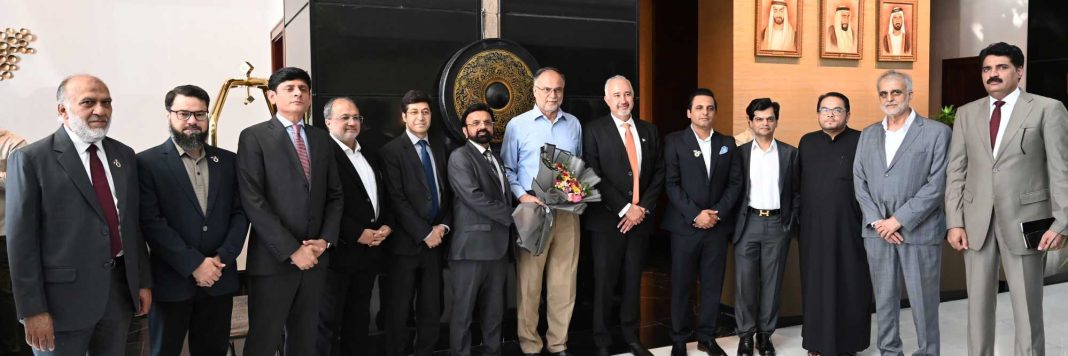There arises a question: why did Pakistan choose the USA instead of the Soviet Union even though the latter invited Pakistan before the former? The power potential model of Ray S. Cline gives a formula, a mixture of tangible and intangible factors, to answer this ambiguous question. According to this, there was a huge difference in the capabilities of the USSR, India, Pakistan, and the USA. Critics sometimes ignore the fact that the U.S. was the sole nuclear power after the WW-II and had established its credibility during the Berlin Blockade and the Korean War.
A careful analysis showcases that the USA was leading at the international level and India at the regional level. There was a dire need for a rational decision by Pakistan to opt for an option with the potential to serve its best interests. In that realm, the USA appeared as the best possible choice to checkmate India. In contrast, leftist tendencies in Indian politics, the Soviet Union’s abundant military and logistical support to India, and U-2 plane incident further tilted Pakistan’s Cold War alignment in favor of the capitalist bloc.
Moreover, an objective analysis can be drawn by utilizing foreign policy models to understand the situation in an unbiased. In that realm, Graham Allison’s “Rational Choice Theory” explains that it was the best possible option for Pakistan to align with U.S. because it was the strategic and utility-maximizing decision driven by the economic and security concerns. During the early years after independence, Pakistan struggled with economic stagnation, internal instability, weak state Institutions, and persistent threats from India. Its objective was to secure survival and developmental goals through external alliances, although the initial consensus was to remain neutral in international politics. However, policymakers in Islamabad calculated the payoff matrix, applied the minimax strategy (minimizing the maximum possible loss), and considered the utility function, and opportunity cost. In their analysis, communist Russia stood nowhere in competition.
This was the primary reason Pakistan preferred the USA over Russia. By doing so, Pakistan secured mutual defense assistance, economic aid, and gain external leverage to checkmate the hawkish neighbor. Otherwise, the cost of isolation would have been severe-namely, weaker military capability and Indian dominance in the region.
Another foreign policy model is the bureaucratic politics model. It challenges the traditional view that foreign policy formulation is unified and made by a rational actor. Instead, it postulates that it is a result of competition, bargaining, and compromises among different agencies. The hierarchical positions, parochial interests, and political bargaining of these agencies result in decisions that may seem rational on the surface but do not align with reality. In simple words, it states that the interests of an actor are shaped by the position it holds. Traditionally, the bureaucracy and the establishment have been the dominant actors in the politics of Pakistan.
Establishment-led choices, which also promised a win-win situation for MoFA and other relevant ministries, shaped Pakistan’s security-centered foreign policy. The lobbying succeeded when Pakistan officially became part of SEATO (1954) and CENTO (1955). However, there were voices arguing that the USSR should also be engaged, but immediate benefits superseded the uncertain strategies.
Another explanation, the Balance of Threat theory, can be divided into two phases: the pre-nuclear phase, and the post-nuclear phase. In the first phase, Pakistan was afraid of Indian aggression. Calculations based on capability, geographical proximity, and threat perception show that India was a threat to Pakistan’s survival. Moreover, the USSR’s ideology-driven crusades under the “Brezhnev Doctrine” stimulated the Warm Water Theory-a fear that the USSR wanted access to the Arabian Ocean by annexing Pakistan after the fall of Kabul. Pakistan leveraged U.S. enmity with the communist-led USSR and bandwagoned for the best possible gains.
This invasion can also be seen as a bridge between the two phases, as it enabled Pakistan to develop the nuclear weapons. After May 28, 1998, Pakistan faced different embargoes and diplomatic pressure. The War on Terror provided Pakistan an opportunity to legitimize its position regarding Non-Proliferation Treaty (NPT). In short, the Balance of Terror, a modified version of the Balance of Power concept, provides the best explanation for Pakistan’s strategic decision during the Cold War.
Robert Putnam’s “Two-Level Game Theory” also provides a sharp analysis of Pakistan’s Cold War foreign policy decisions. According to this, a policy has to pass two levels for its successful implementation. The first is the International level, where leaders negotiate, and the second is domestic level, where validity and the ratification of the decision are required. Greater coherence between the two levels indicates more win-shots.
In the context of Pakistan, the narrative of religion dominated its early years. The perception of USSR, as an atheist state led by Marxists-Leninist thoughts of religion as the opium of the masses, played a key role is Pakistan’s foreign policy. However, there was a strong resistance from the leftist. The lateral power shift in favor of Ayyub and Zia increased the win-shots and suppressed the opposing voices. However, legitimacy of rule and international recognition remained common factors in Pakistan’s inclination towards the U.S.
These policies impacted Pakistan both positively and negatively. Firstly, Pakistan received $2 billion in military aid from USA during 1954-1965. Its economic aid surpassed $3 billion during the same period, resulting in a “Decade of Development” under Ayub, with 6% GDP growth rate. Moreover, it provided Pakistan with opportunities to strengthen its relations with other Western States. Military modernization, the supply of weapons, and U.S. guarantees deterred India from attacking Pakistan after the Kashmir war of 1948. Moreover, the U.S-led investment in the Mangla and Tarbela dams, infrastructure projects, ports and transportation helped Pakistan improve its infrastructure, electricity production, and agricultural growth. From the point of leadership, it helped all the dictators to legitimate their rule due to U.S. support.
There are also negative aspects of this alignment. The U.S. support to Pakistan was aimed at countering communism (as clarified through the 1959 bilateral agreement), but Pakistan relied on Washington for support against India. This misadventure highlights Pakistan’s strategic miscalculations. Instead of unwavering support, it resulted in a U.S. arms embargo on Pakistan after 1965 and 1971 wars. In addition, the Soviet Union directly threatened Pakistan after the U-2 incident of 1960. This strategic blunder helped India gain Soviet support against Pakistan, resulting in a treaty of friendship that shattered Pakistan during the fall of Dhaka. Moreover, the security dilemma and the nuclearization of South Asia further complicated the regional affairs. Apart from that, Pakistan became dependent on the USA for its economy and military assistance.
This was also driven by the self-interests of the U.S, as relations had been very strong when Pakistan was the pivotal point in U.S. Asia-Pacific doctrine but deteriorated when Washington no longer needed Islamabad. The “rule of thumb” by dictators strengthened the bureaucratic-military dominance in foreign policy formulation, and the self-interests of these institutions exceeded the nation’s interests, worsening Pakistan’s geoeconomic position. Above all, U.S. alignment resulted in the influx of terrorism into Pakistan, followed by allegations that Pakistan was a supporter of terrorism, deteriorating not just its image at the international level, but also giving India the opportunity to bandwagon on the already established theme.
There were also some practical alternative pathways that Pakistan could have adopted during the Cold War. For instance, Pakistan could have chosen non-alignment instead of joining SEATO and CENTO. It would have helped Pakistan build stronger connections and economic ties with newly independent states, resulting in a diversification of trade partners in the post-Cold War era. In this way, Pakistan could have balanced its relations with the U.S. and the Soviet Union to gain maximum benefits.
As per the neo-realist argument, another plausible option could have been internal capacity building, which could have resulted in long-term gains. By effectively capitalizing on the soft power and Muslim brotherhood narrative, Pakistan would gain a leadership position in OIC. Moreover, indigenous defense would have been a wise idea. In that domain, Pakistan could have started nukes buildup earlier to deter India, instead of relying on the other powers. Additionally, regionalism approach, making effective economic cooperation, and connectivity with Asia, particularly ASEAN, China, Russia, and Iran, Pakistan could have leveraged its position.
History offers valuable lessons. There are still promising pathways that Pakistan could adopt to become a regional economic power in the coming years. For instance, it could adopt hedging approach-panthers with all major and relevant states, such as China, Russia, USA, ASEAN, Central Asian States, SAARC, EU, ECO – to enhance bilateral and multilateral cooperation. In this domain, Pakistan needs to effectively implement the “geoeconomic shift” outlines in its National Security Policy (2022-26). Moreover, the 21st century, as noticed by Barry Buzan, is an era of non-traditional security threats. Pakistan should leverage areas such as human security, climate change mitigation, soft power, public diplomacy, and cybersecurity cooperation.
Regional connectivity remains a critical area of focus. Numerous pending projects should be revisited, and CPEC should be properly leveraged to attract future FDI from developed states, particularly within Special Economic Zones (SEZs). In short, road to serfdom lies in how the policy makers prioritize the national interests of Pakistan. Such initiatives could trigger a spillover effect, where progress in trade and infrastructure can enhance deeper regional integration across political and security dimensions. In short, the road to prosperity – or to stagnation – depends on how policy makers prioritize Pakistan’s national interests.




